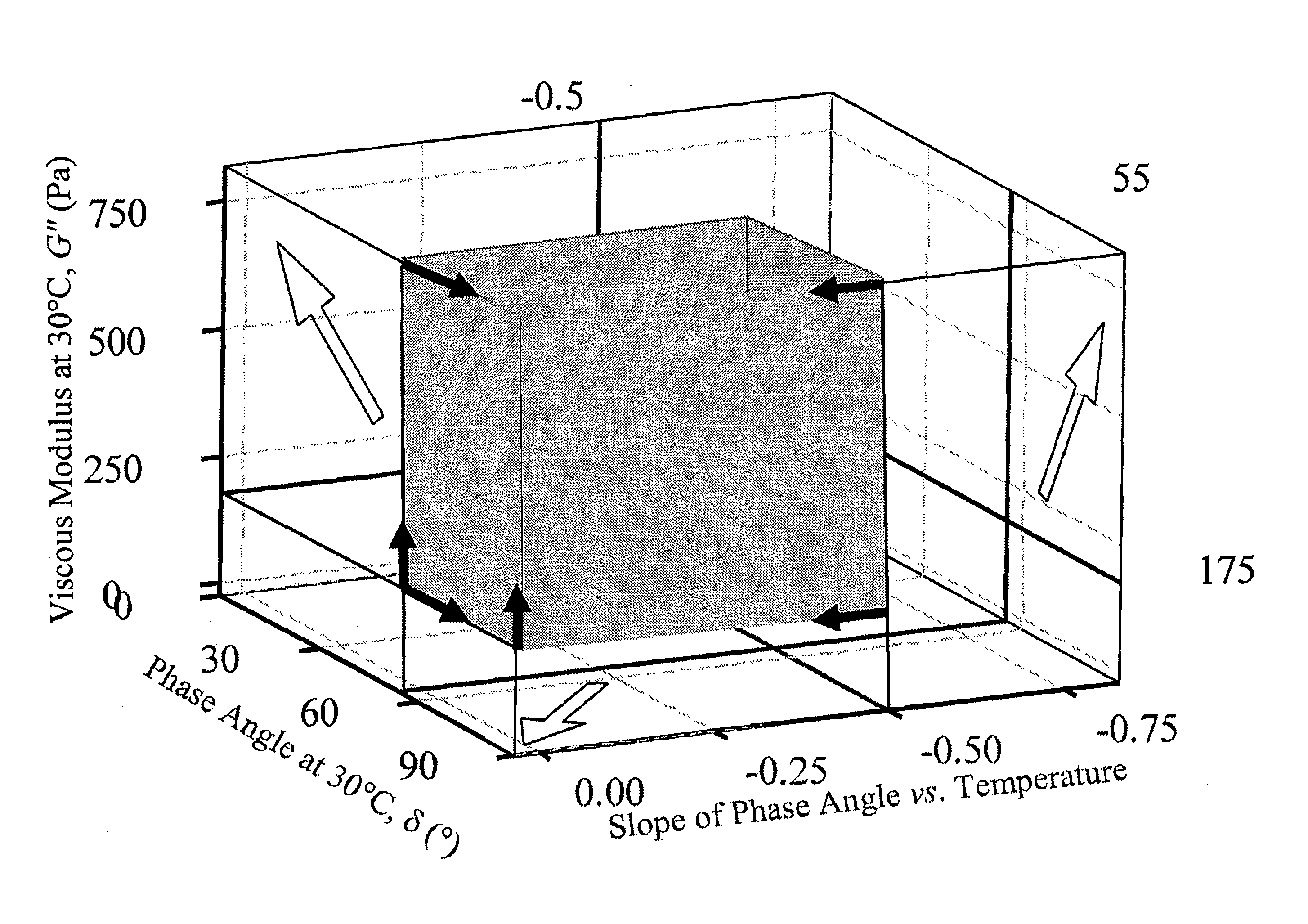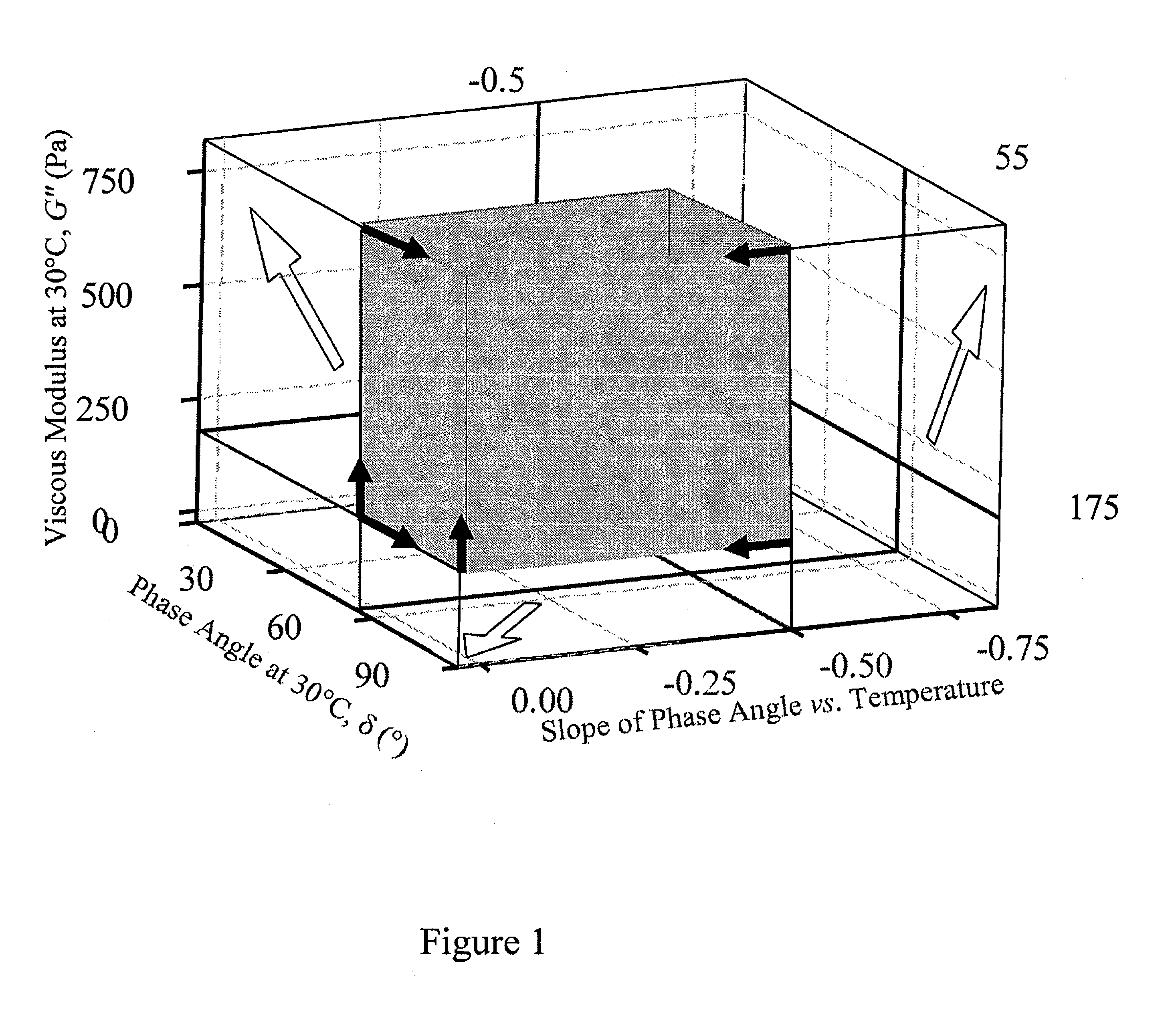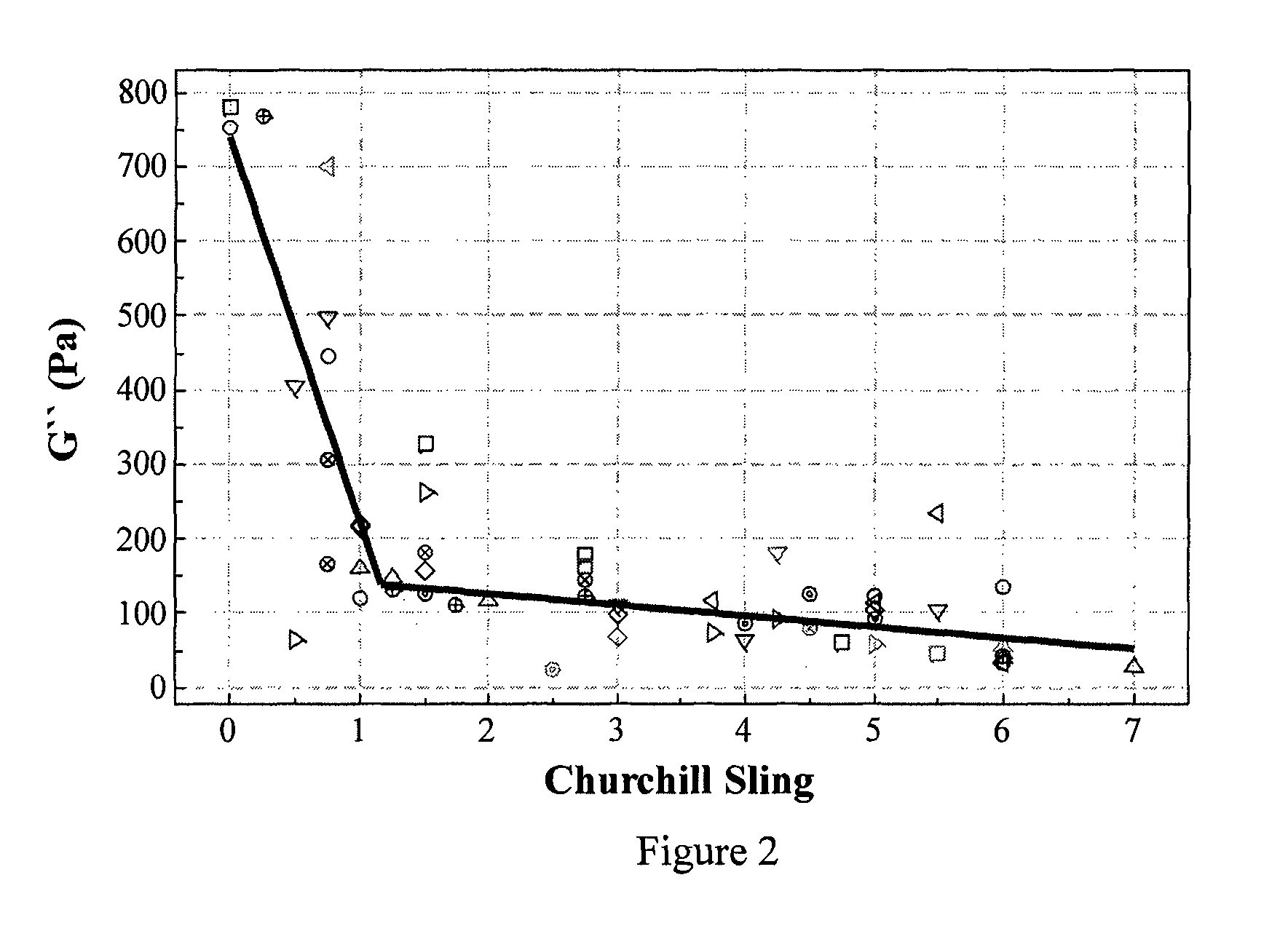Reduction of misting in high speed offset printing
a printing ink and high-speed technology, applied in the field of reducing the misting of printing inks, can solve the problems of high-speed presses, health hazards for printing workers, and increased problems for ink manufacturers, and achieve the effect of reducing the misting and reducing the degree of misting
- Summary
- Abstract
- Description
- Claims
- Application Information
AI Technical Summary
Benefits of technology
Problems solved by technology
Method used
Image
Examples
examples
[0023]The rheological tests as described above were performed on a panel of 55 commercially available inks at 30° C., 40° C. and 50° C. FIG. 1 shows the parameter space in which the viscous modulus would be larger than about 150 Pa, the phase angle would be larger than about 55° and the phase-angle slope would be larger than −0.50° / ° C. It was found that those inks in the test panel that had a low degree of misting on high speed printing presses had test results inside that parameter space.
[0024]FIG. 2 is a graph of viscous modulus G″ vs. “Churchill sling” data, i.e., data from the sling of a inkometer made by Churchill. The figure shows a clear relationship between these two parameters. The data was further divided into two groups: (1) inks with phase angles at all three test temperatures being larger than 45° and (2) inks with at least one phase angle equal or less than 45°. The phase angle of 45° is the boundary between materials whose viscous modulus is larger than its elastic m...
PUM
 Login to View More
Login to View More Abstract
Description
Claims
Application Information
 Login to View More
Login to View More - R&D
- Intellectual Property
- Life Sciences
- Materials
- Tech Scout
- Unparalleled Data Quality
- Higher Quality Content
- 60% Fewer Hallucinations
Browse by: Latest US Patents, China's latest patents, Technical Efficacy Thesaurus, Application Domain, Technology Topic, Popular Technical Reports.
© 2025 PatSnap. All rights reserved.Legal|Privacy policy|Modern Slavery Act Transparency Statement|Sitemap|About US| Contact US: help@patsnap.com



